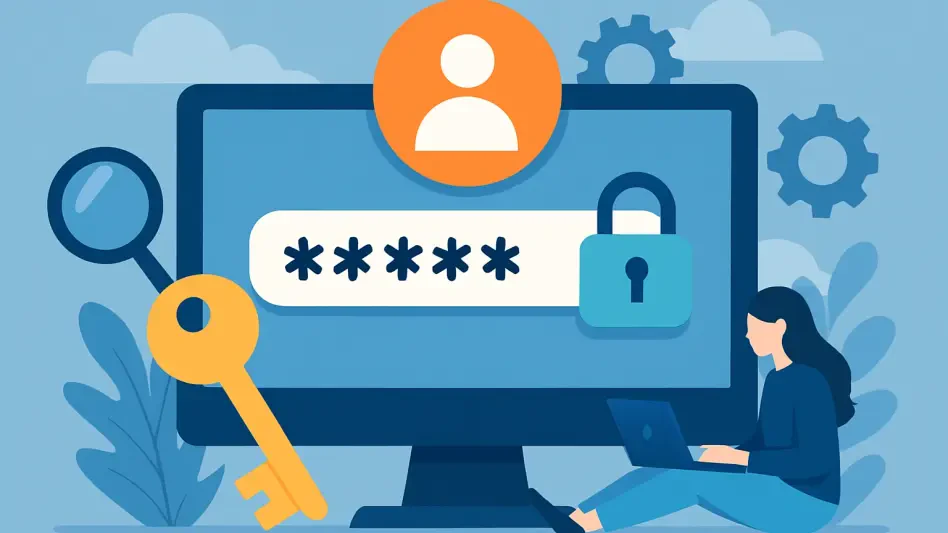In an era where cybersecurity breaches are increasingly common and the need for robust password recovery tools has never been more critical, a significant update to one of the most powerful open-source utilities has emerged to address these challenges head-on. This tool, widely recognized among cybersecurity professionals, supports over 300 optimized hashing algorithms and operates seamlessly across multiple platforms, including Linux, Windows, and macOS. With the ability to leverage CPUs, GPUs, and other hardware accelerators, it also enables distributed password cracking at scale. The latest release marks a pivotal moment for red teams and security operations centers, delivering groundbreaking enhancements that redefine efficiency and adaptability in password recovery. This update not only strengthens core functionalities but also sets a new benchmark for innovation in the field, promising to empower professionals with cutting-edge capabilities to tackle modern security threats.
Breaking New Ground with Innovative Features
Expanding Capabilities with Advanced Integrations
The recent update to this leading password recovery tool introduces a transformative feature known as the Assimilation Bridge, which seamlessly integrates external resources such as CPUs, FPGAs, and embedded interpreters into the cracking pipeline. This advancement allows for unprecedented flexibility, enabling users to harness diverse hardware environments with ease. Additionally, the Python Bridge Plugin stands out as a game-changer, permitting developers to craft hash-matching logic in Python without the need for recompilation. This plugin supports multithreading and integrates smoothly with the tool’s rule engine, fostering a more dynamic development process. With contributions from 105 developers, including 74 first-time collaborators, and over 900,000 lines of code, this release consolidates previously unannounced updates into a well-documented package. The result is a utility that not only enhances its technical prowess but also reflects a strong commitment to community-driven innovation in cybersecurity.
Streamlining Development and User Experience
Beyond hardware integration, this update prioritizes usability through features like auto-detection of hash modes, eliminating the manual specification that once slowed down workflows. Virtual Backend Devices further enhance efficiency by partitioning physical GPUs into logical units, optimizing asynchronous processing for complex tasks. Docker-based builds, including cross-compilation to Windows, simplify deployment across various platforms, making the tool more accessible to a broader audience. The emphasis on modularity is evident, as developers and security professionals can now adapt the software to specific needs with minimal friction. Performance metrics also tell a compelling story, with significant speed increases in specific hash modes, demonstrating that usability and power can coexist. This focus on streamlining both development and operational aspects ensures that users, from novices to experts, can leverage the tool’s capabilities without facing steep learning curves or technical barriers.
Performance Boosts and Expanded Support
Unmatched Speed and Optimization Achievements
Performance has taken center stage in this latest version, with remarkable improvements that redefine expectations for password recovery tools. Specific hash modes like scrypt have seen processing speeds surge by up to 320%, while NetNTLMv2 on Intel hardware achieves gains of up to 223%, and RAR3 processing is enhanced by as much as 54%. Under-the-hood refinements, such as a revamped autotuning engine and an advanced memory management system, eliminate previous constraints like the 4GB allocation limit, paving the way for seamless multi-device operations. These optimizations ensure that cybersecurity professionals can execute tasks faster and more efficiently, even when dealing with resource-intensive workloads. The focus on speed not only boosts productivity but also positions the tool as a leader in handling the increasingly complex demands of modern password cracking, where time is often of the essence in mitigating security risks.
Broadening Horizons with New Algorithms and Hardware
This release also expands its reach by supporting 58 new application-specific hash types, including Argon2, MetaMask, and LUKS2, alongside 17 generic hash constructions and 11 new primitives for plugin development. Additionally, 20 new tools facilitate hash extraction from diverse formats such as APFS, BitLocker, and cryptocurrency wallets, catering to a wide array of use cases. Hardware compatibility sees a significant boost with AMD’s HIP backend taking precedence over OpenCL when available, and native Metal support for Apple users ensures full compatibility with Apple Silicon, delivering notable speed gains on macOS. This broadened scope reflects an understanding of the evolving cybersecurity landscape, where diverse threats require versatile solutions. By accommodating an extensive range of algorithms and hardware, the tool empowers users to address emerging challenges, ensuring it remains a vital asset for security operations across different environments and platforms.
Reflecting on a Milestone in Cybersecurity Tools
Looking back, the release of this updated password recovery utility marked a defining moment for the cybersecurity community, showcasing how open-source collaboration could drive substantial advancements. The blend of performance enhancements, innovative integrations, and expanded support for algorithms and hardware underscored a commitment to meeting the diverse needs of security professionals. As the landscape of digital threats continues to evolve, the strides made in this version laid a solid foundation for future innovations. Moving forward, users and developers alike are encouraged to explore the extensive capabilities available through platforms like GitHub, where the tool remains freely accessible. Engaging with the community to share insights, develop custom plugins, or contribute to ongoing improvements can further elevate its impact. This milestone serves as a reminder that staying ahead in cybersecurity requires not just powerful tools, but also a proactive approach to adapting and refining strategies for the challenges that lie ahead.








